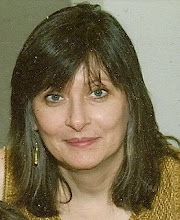For years my daughter begged to study harp. I ignored her pleas because, to put it charitably, she was an indifferent piano student. Although she began lessons at 6 years old, she never seemed to find the right “click” in a teacher, and there was no real spark, although in general she loved music. I hoped to put off harp lessons forever, as I didn’t need any more giant instruments that sat around our house unplayed.
About 4 years ago, I heard an interview on NPR with Max Zbiral-Teller (whose family happens to live a few blocks from us). He’s an extraordinary hammered dulcimer player who described how he had begged for years to be allowed to learn the instrument, finally convincing his parents. The NPR commentator went on to describe him as probably the best in the world (Max was then about 16). A chill went up my spine. What if people are meant for certain instruments, and I was preventing my daughter from discovering her real calling?
Yup. Three years later, she is playing in two youth orchestras, practices three hours a day voluntarily (I could barely nag 30 minutes out of her on piano), and adores it. I have come to believe that, even though most children begin on piano or violin, they should have an opportunity to try out other instruments whenever possible. I had originally agreed to let her try 10 lessons, and even though the first harp teacher was dismal, I could see a difference in my daughter’s commitment from day one.
Harp playing sounds beautiful from the first day, something that cannot be said for violin. It has a great range, and many styles of music—folk, Celtic, jazz, blues, and of course, classical—sound extraordinary and unique on harp. But harp’s reputation is that it’s the exclusive province of angelic little girls from wealthy families, and that points to the main problem in its lack of popularity: there’s no easy entry point.
You can pick up an electric piano at an electronics store for a few hundred bucks, or haul one out of someone’s basement for about the same price, and see if your kid will actually work at the thing. School orchestras and bands often have loaner instruments for violins, flutes, you name it. However, you’ll be very fortunate if your kid’s school orchestra owns a harp, and even more so if it has been restrung and regulated in the past ten years. Harp has no “try-out” instrument that costs less than several thousand dollars.
We were lucky to find a used Dusty Strings lever harp for $2100 (plus another $125 for restringing), but it was a fluke. A decent lever harp is going to set you back upwards of $4K, and the half-way decent student will be whining for a pedal harp in two years or so. Don’t even think of spending less than $10K for a pedal harp. This level of entry is beyond what most parents can stomach without knowing whether the child has any commitment to the field. If you’re lucky, the teacher will have a harp or two to rent, but they go fast.
Unlike many other instruments, harps don’t last. They get beat up easily and the sound board lifts up. A used harp or one that has been rented extensively should be approached with the caution you’d apply to purchasing a used car: take your mechanic (harp teacher) with you. And be warned, six different harps of the same model will have six different sounds. Not an easy thing to purchase online.
It’s too bad that it’s so expensive to get started, because it’s an instrument that children are naturally drawn to. Whenever my daughter plays, kids can hardly keep their hands off the harp.
The other problem harp has is that there is relatively little music written for it in the classical sphere. Although it’s one of the most ancient instruments (think Greek vases), the harp had a limited range until the double action pedal harp (invented in the early 19th century) made it more versatile and appealing to composers. Repertoire available for harp is pretty much limited to works composed after then, with a bigger role for harp in opera and ballet music, whose heyday coincides more closely with the double action harp. Of course, numerous transcriptions of earlier music are available, and harp has a huge repertoire in folk and particularly Celtic music. Nevertheless, the harpist for an opera company is likely to be busier than the harpist in a symphony orchestra.
There’s some sensational stuff out there, well beyond the angel choirs type stuff. Give a listen to Kim Robertson (Celtic), Joy Yu Hoffman (Chinese, and btw my daughter’s current teacher), Deborah Henson-Conant (jazz & pop) or Judy Loman (classical). Prepare to be transported.
Subscribe to:
Post Comments (Atom)

No comments:
Post a Comment